How Sensor Networks Detect Plant Diseases Early
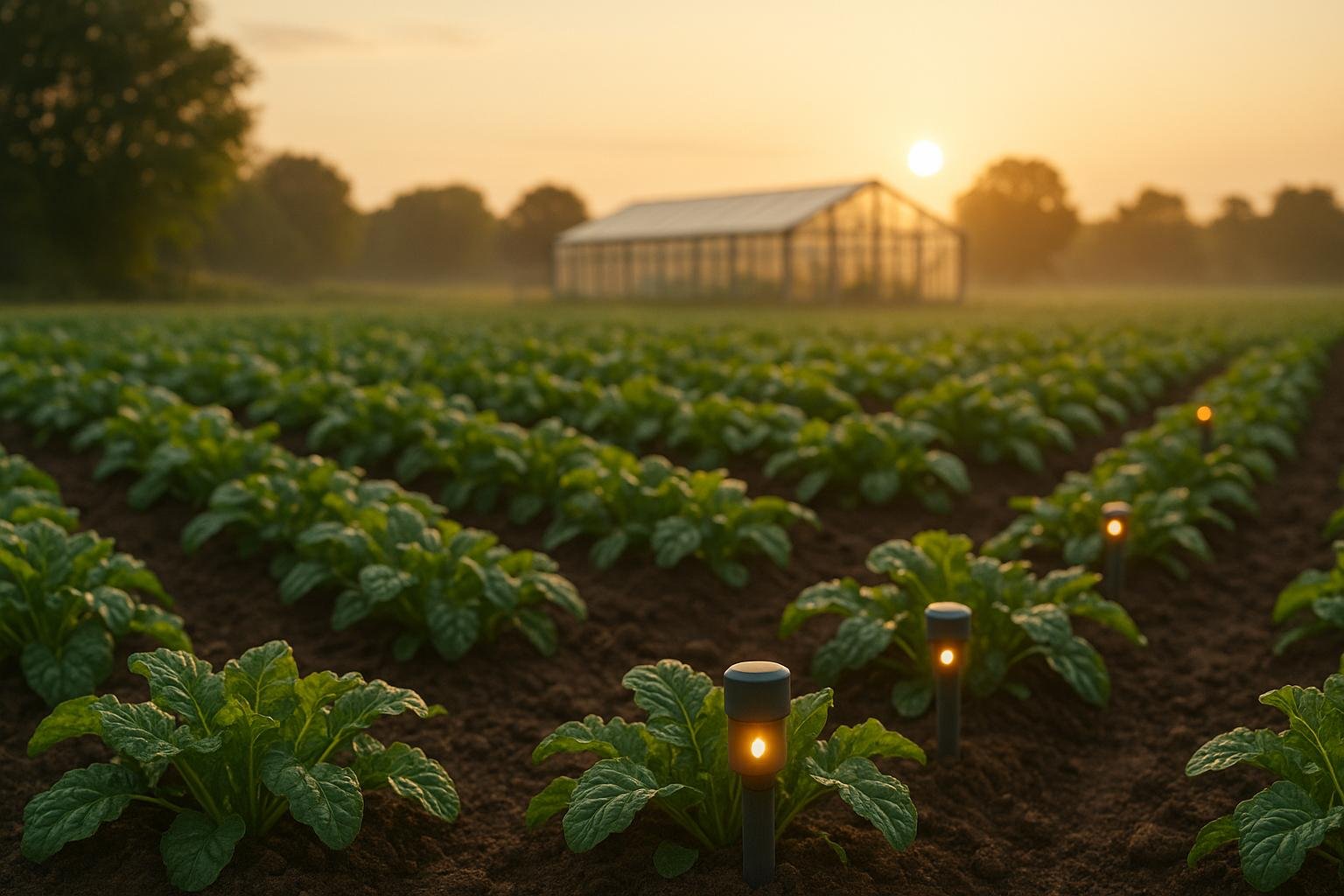
Sensor networks help detect plant diseases before they become visible, saving crops and reducing losses. These systems use advanced technologies like imaging, chemical, and thermal sensors to monitor plant health in real time. Here's how they work:
- Continuous Monitoring: Sensors track plant health 24/7, identifying subtle changes in color, temperature, or soil chemistry.
- AI Analysis: Machine learning processes the data to detect disease patterns with up to 88.07% accuracy.
- Early Alerts: Notifications warn gardeners of potential issues, enabling timely action.
Key Technologies:
- Light-Based Sensors: Detect color changes using multispectral and hyperspectral imaging.
- Chemical Sensors: Monitor soil pH, nutrients, and gas emissions for stress indicators.
- Thermal Sensors: Spot temperature anomalies in plant tissues linked to diseases.
Setting Up:
- Use 3–15 sensors depending on garden size.
- Employ solar power, batteries, or grid power for sensor operation.
- Pair with tools like AIGardenPlanner for tailored advice.
Benefits:
- Detect diseases 7–10 days earlier.
- Reduce crop damage by up to 78% with early intervention.
Start with a basic system for under $300 to protect your garden and improve plant health.
How to Choose a Wireless Field Monitoring System

Key Sensor Technologies for Disease Detection
Sensor networks, grounded in fundamental early warning principles, rely on three key types of sensors to detect plant diseases at an early stage. Together, these sensors create a well-rounded system for identifying potential threats to crop health.
Light-Based Sensors: Detecting Changes in Plant Color
Multispectral and hyperspectral cameras play a crucial role in identifying subtle color changes in plants by analyzing how they reflect and absorb different wavelengths of light. Techniques like NDVI (Normalized Difference Vegetation Index) are employed to measure plant health. For instance, hyperspectral imaging has been successfully used in wheat farming to catch powdery mildew in its early stages, enabling timely intervention. To complement this optical data, chemical sensors monitor the soil and plant chemistry, offering additional insights into potential disease indicators.
Chemical Sensors: Monitoring Soil and Plant Chemistry
Chemical sensors provide vital data by measuring various parameters that can signal plant health issues. Here's a breakdown of their functions:
| Parameter | What It Measures | Disease Indicators |
|---|---|---|
| Soil pH | Acidity/Alkalinity | Sudden pH shifts may indicate root diseases |
| Electrical Conductivity | Nutrient Availability | Abnormal readings can point to nutrient stress |
| Gas Emissions | Plant Stress Markers | Elevated ethylene levels suggest plant stress |
| Moisture Content | Water Availability | Irregular moisture patterns may signal root issues |
These sensors are particularly effective in identifying root diseases by detecting harmful changes in soil chemistry. To add another layer of precision, thermal sensors are used to identify temperature anomalies linked to disease.
Heat Sensors: Detecting Temperature Irregularities
Thermal sensors leverage infrared technology to spot temperature changes in plant tissues. Diseased plants often show abnormal temperature patterns due to disruptions in their transpiration rates. These sensors are especially useful for identifying various issues, including fungal infections that cause localized heating, bacterial diseases that lead to uneven temperature distributions, and root problems that result in unusual temperature patterns.
When light-based and thermal sensors are used together, the accuracy of disease detection improves by 29% compared to relying on a single type of sensor. This combination enhances the ability to pinpoint and address plant health issues effectively.
Setting Up Sensor Networks in Gardens
Sensor Placement Guide
The placement of sensors in your garden depends on its size and layout. For gardens smaller than 500 sq ft, use 3–5 sensors placed at different heights to gather diverse data:
- At ground level to track soil conditions
- Mid-canopy for monitoring leaf moisture
- Above the canopy for environmental readings
Concentrating sensors in areas prone to disease improves early detection rates by 40% compared to evenly spaced placement. In medium-sized gardens (500–2,000 sq ft), arrange sensors in a grid with 10–15 feet between them.
| Garden Size | Recommended Sensor Spacing | Minimum Sensors Needed |
|---|---|---|
| Small (<500 sq ft) | 5–8 feet | 3–5 |
| Medium (500–2,000 sq ft) | 10–15 feet | 6–12 |
| Large (>2,000 sq ft) | 30–50 feet | 15+ |
Network Setup and Connection Methods
The type of network you choose should align with your garden's size. For small gardens, a star topology works well. In this setup, sensors connect directly to a central hub using Wi-Fi or Bluetooth, with data collected every 5–15 minutes. Medium gardens benefit from a mesh network using ZigBee, which provides reliable coverage and collects data every 15–30 minutes.
ZigBee is a popular choice for small to medium gardens due to its low power consumption and self-healing network design. For larger gardens, LoRaWAN is ideal, offering a range of up to 6 miles, making it suitable for expansive installations.
Power Options for Sensors
Reliable power is crucial for sensor networks, and there are several options to consider:
-
Solar Power Systems
Perfect for gardens with at least 4 hours of direct sunlight daily. Small solar panels (2–5W) can keep sensors running indefinitely, paired with backup batteries for nighttime operation. -
Battery Solutions
Choose batteries based on your needs:- Lithium-ion: Lasts 6–12 months on a single charge.
- Lithium primary: Offers 1–3 years of operation.
- Alkaline: A budget-friendly choice, lasting 3–6 months.
-
Grid Power
Best for permanent setups, especially in areas with limited sunlight. Ensure proper weatherproofing and ground fault protection for safety.
In colder regions, standard batteries may lose up to 50% of their capacity when temperatures drop below 32°F. For these conditions, use low-temperature batteries. If you're in a region like the Pacific Northwest, where sunlight is scarce, consider combining solar panels with extended-life batteries for consistent performance.
This sensor network setup lays the groundwork for effective AI-driven data analysis, which will be explored in the next section.
🚀 Ready to Reinvent Your Garden?
Join thousands of homeowners who have transformed their gardens using our AI design tool. Upload one photo to explore endless possibilities.
Get your AI garden designs →Using AI to Process Sensor Data
Data Cleaning Methods
Before AI can accurately detect diseases, raw sensor data needs thorough cleaning. This process includes several essential steps:
- Outlier Detection: Statistical techniques help identify and remove abnormal readings that don't align with expected ranges. For instance, a sudden, sharp temperature spike that doesn't match historical patterns is flagged and filtered out. This step alone can enhance accuracy by up to 29%.
- Noise Reduction: Using advanced filtering methods, sensor readings are smoothed out, minimizing interference and improving reliability across various sensor types, including environmental, chemical, and spectral sensors.
- Data Synchronization: When multiple sensors are in play, their readings must be aligned in time to ensure the data correlates correctly across different measurements.
Once cleaned, the data becomes a solid foundation for neural networks to identify complex disease patterns with greater precision.
Neural Networks for Disease Detection
Neural networks excel at spotting intricate patterns in sensor data that indicate disease. For example, the YOLOv3 algorithm, enhanced with spatial pyramid pooling, achieves an impressive 88.07% detection accuracy. These AI models often rely on databases like PlantDoc, which contains 3,451 data points covering 12 plant species and 14 disease categories. This robust dataset helps the models recognize and categorize diseases effectively.
AI Disease Forecasting
AI takes disease detection a step further by predicting potential outbreaks. By analyzing environmental trends such as temperature, humidity, and rainfall, AI systems can forecast conditions favorable for pathogens. Edge-AI devices add another layer of efficiency, processing data from multiple sensors in real time to improve early detection.
Historical disease data also plays a crucial role. Patterns like seasonal trends, weather connections, and disease spread dynamics help refine these predictions. Studies show that combining inputs from multiple sensors significantly boosts classification reliability compared to relying on single data points. This multi-sensor approach is particularly helpful in distinguishing between conditions that might appear similar, such as drought stress versus disease symptoms.
sbb-itb-4d6a8dd
Home Garden Sensor Systems
Home garden sensor networks are a practical, low-cost way to catch plant diseases early, even if you're not tech-savvy. They’re easy to set up and can save your garden with timely alerts.
Budget-Friendly Sensor Options
For a home garden up to 500 square feet, you can set up a disease detection system for around $150–$300. Here’s a breakdown of affordable sensor components:
| Component Type | Price Range | Key Features |
|---|---|---|
| Soil Moisture/pH Sensors | $15–$30 | Tracks soil health and identifies stressors |
| Temperature/Humidity Sensors | $20–$40 | Monitors conditions that promote disease |
| Leaf Wetness Sensors | $25–$45 | Detects how long leaves stay wet |
| Central Hub/Gateway | $50–$120 | Collects and sends data to your devices |
| Basic Power Supply | $10–$20 | Options include batteries or solar power |
If you're just getting started, focus on soil moisture and temperature sensors - they’re reliable and cover the basics for early disease detection.
Using AIGardenPlanner with Sensors
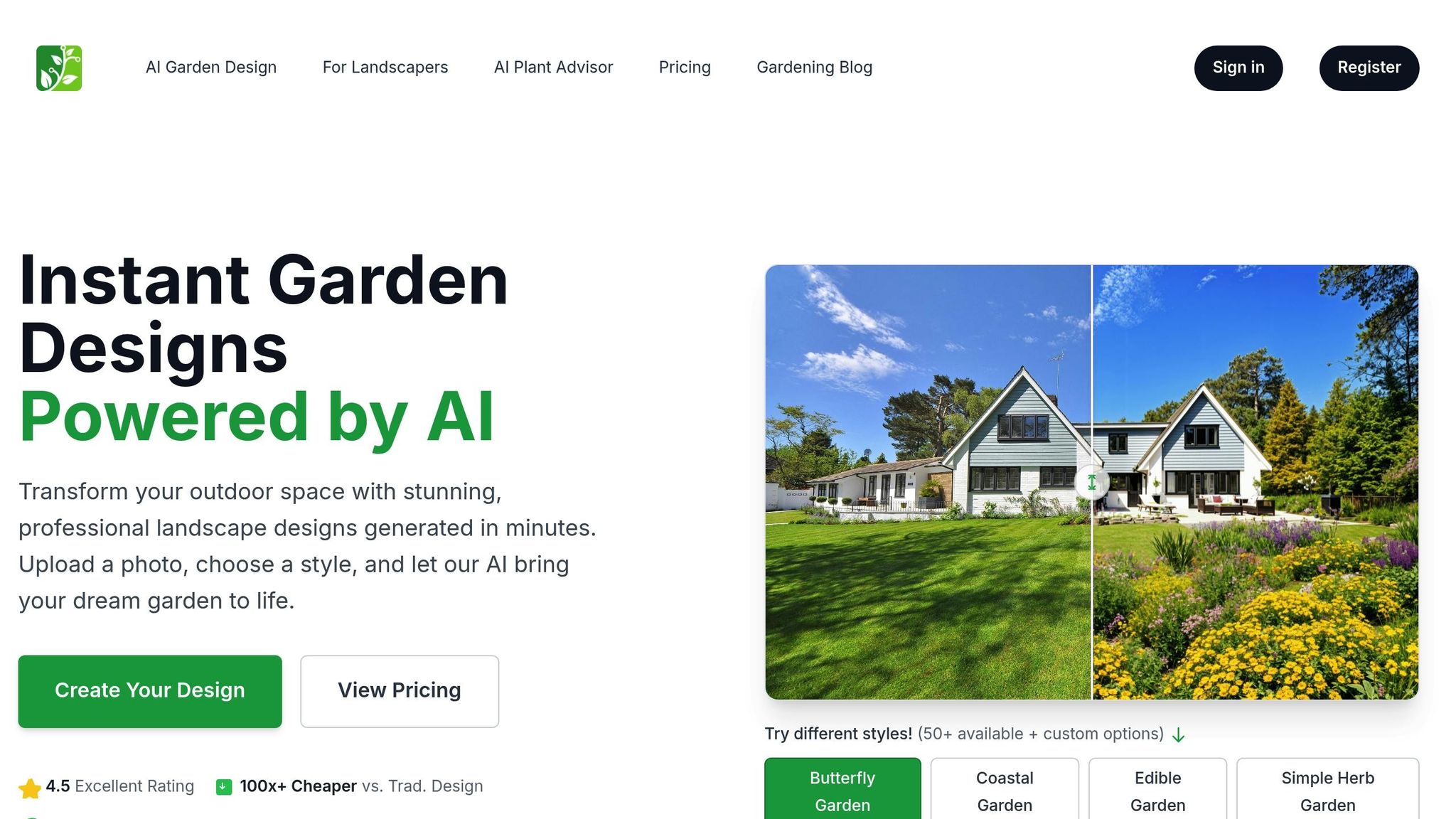
Pairing your sensors with AIGardenPlanner takes your garden monitoring to the next level. This tool analyzes the data from your sensors and cross-references it with its extensive plant database to provide tailored advice for your garden.
Here’s what AIGardenPlanner can do when it detects unusual conditions:
- Set custom alert thresholds based on the plants in your garden.
- Display sensor data visually on a map of your garden layout.
- Offer preventive care tips to address potential issues before diseases spread.
- Adjust your garden’s maintenance schedule in real time based on current conditions.
This combination of sensors and smart insights makes managing your garden easier and more effective.
Case Study: Detecting Tomato Disease Early
In a 2023 community garden study, a sensor network detected Early Blight in tomatoes 7–10 days before visible symptoms appeared. The sensors picked up subtle changes, like a 0.3°F rise in leaf temperature and shifts in humidity near the plants. Gardeners who acted on these early warnings by applying organic fungicides reduced crop damage by 78% compared to untreated plants.
Another example comes from a home gardener in the Pacific Northwest. Using sensors, they identified conditions ideal for Late Blight - temperatures between 60–70°F and humidity over 90%. Prompt action based on these alerts helped them avoid losing their crops.
To get the best results, place sensors where they’ll monitor key areas: leaf wetness, soil moisture at the root level, and ambient temperature and humidity at the height of your plants. These strategic placements ensure you’re always one step ahead of potential problems.
Conclusion: Next Steps in Sensor-Based Plant Care
Sensor networks are changing the way we approach plant disease management. Research shows that combining sensors with AI can improve detection accuracy by as much as 29%. This means home gardeners can catch potential issues even before they become visible.
Starting with sensor-based care doesn’t have to be complicated or expensive. Basic sensors that track soil moisture and temperature can be a great entry point, with starter kits available for under $100. These simple tools lay the groundwork for a more advanced system.
Here’s how you can get started:
- Place your hub device in a central location to ensure strong connectivity.
- Position sensors at the level of your plant canopy to get the most accurate readings.
- Sync your system with tools like AIGardenPlanner for tailored care advice.
- Set up automated alerts to notify you of any unusual changes.
Using multiple sensors together gives you a clearer picture of your plants’ overall health. By integrating this data, you can make smarter decisions about disease prevention and treatment.
With the techniques outlined above, smart garden systems are now more accessible than ever. These connected systems not only help you grow healthier plants but also promote resource conservation. By adopting sensor technology, you’re not just protecting your garden - you’re also contributing to a more sustainable future. To get the most out of your system, make sure to regularly calibrate your sensors and stay updated on the latest advancements in monitoring technology.
FAQs
How do sensor networks help detect plant diseases earlier and more accurately than traditional methods?
Sensor networks bring cutting-edge technology to plant care, enabling real-time monitoring of environmental conditions, soil quality, and plant health. These systems use smart sensors to track key factors like temperature, humidity, and nutrient levels, making it possible to detect early signs of disease - often before any visible symptoms emerge.
Unlike traditional methods that rely on manual checks or lab tests, sensor networks deliver quicker and more accurate insights. This means gardeners and farmers can respond promptly, stopping diseases from spreading and reducing crop damage. Incorporating these tools into your gardening routine can lead to healthier plants and better harvests.
What factors should you consider when selecting power options for sensor networks in various climate conditions?
When deciding on power solutions for sensor networks across various climates, it's crucial to consider both the environmental conditions and the energy needs of the network. Factors like temperature fluctuations, humidity, and sunlight availability can directly affect how well power sources, such as batteries or solar panels, perform and how long they last.
In colder regions, choose power systems that can withstand low temperatures without significant efficiency loss. On the other hand, solar panels can be a dependable choice in areas with plenty of sunshine and warmer weather. It’s also essential to evaluate the energy consumption of the sensors and how often they transmit data. This will help you pick a power source capable of delivering steady performance. Thoughtful preparation ensures your network stays reliable, even when the weather gets tough.
How do AI-powered sensor networks help detect and prevent plant diseases early?
🎨 Visualize Your Dream Garden Today!
Transform any outdoor space into a professional landscape design in minutes. Just upload a photo, choose your style, and let our AI do the rest.
Start your garden transformation now →How AI-Powered Sensor Networks Help Prevent Plant Diseases
AI-powered sensor networks are transforming the way plant diseases are detected and managed. These advanced systems continuously monitor conditions like temperature, humidity, soil moisture, and even the state of plant leaves. Using sensors to gather real-time data, they rely on AI algorithms to analyze the information and spot early signs of disease - often before any visible symptoms appear.
This early detection allows gardeners and landscapers to act swiftly, stopping diseases from spreading and avoiding costly damage. These tools are a game-changer for keeping gardens healthy and ensuring plants thrive in their unique environments.
Related posts
Related Articles
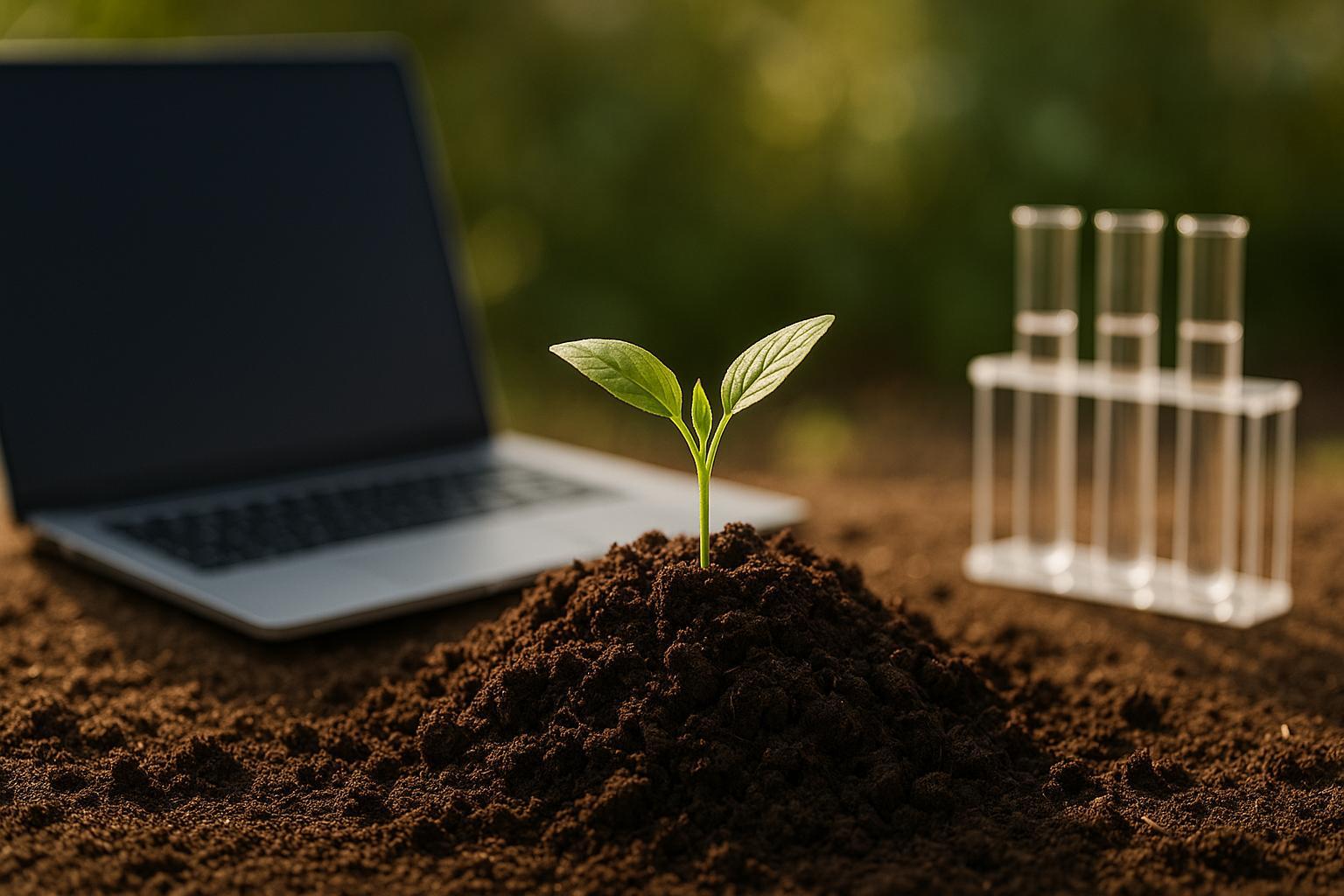
Machine Learning for Compost Quality Analysis
Explore how machine learning enhances compost quality analysis, improving efficiency, sustainability, and garden productivity.
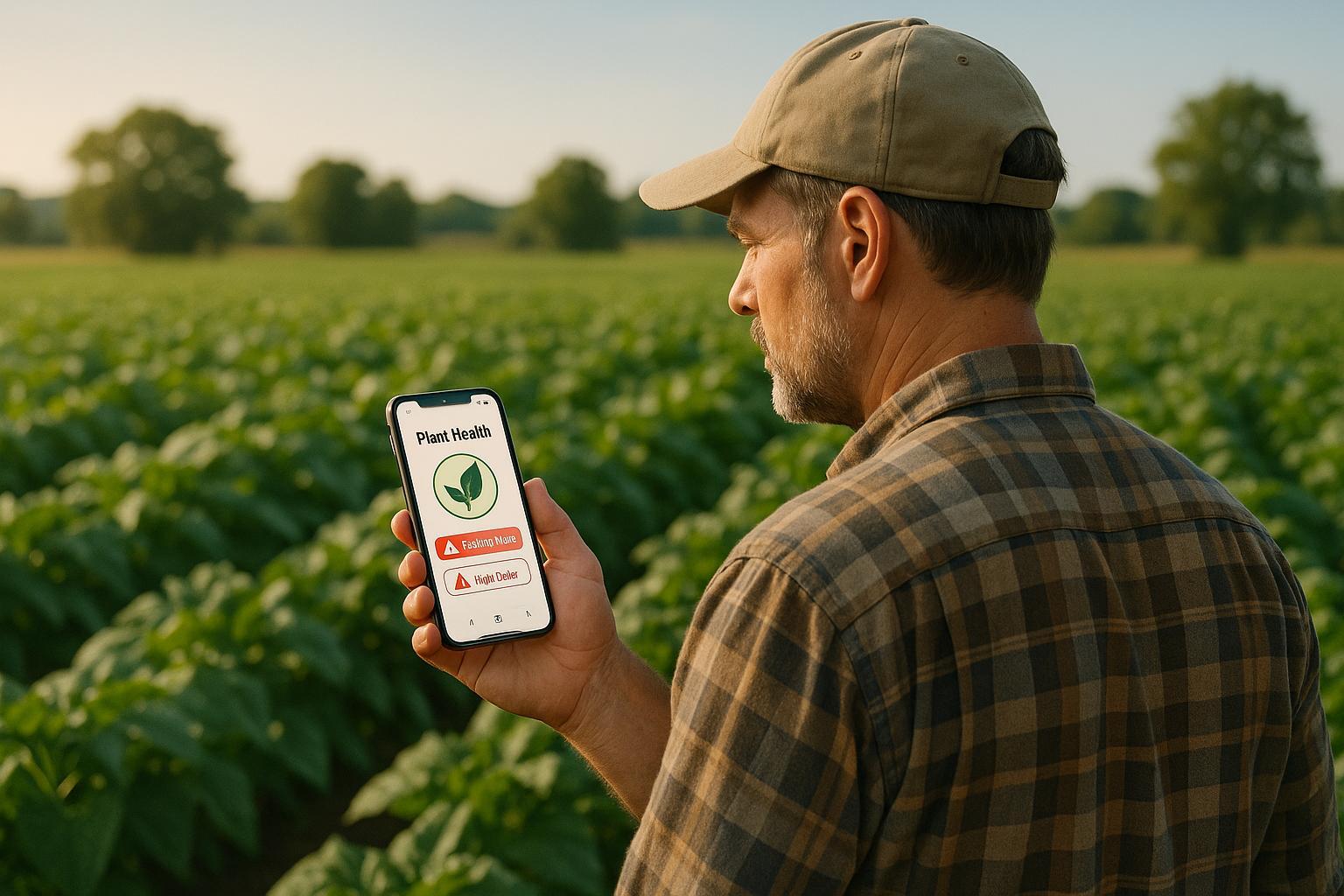
How Mobile Alerts Help Prevent Plant Disease Spread
Mobile alert systems revolutionize plant disease prevention by providing real-time monitoring and tailored alerts for gardeners and farmers.
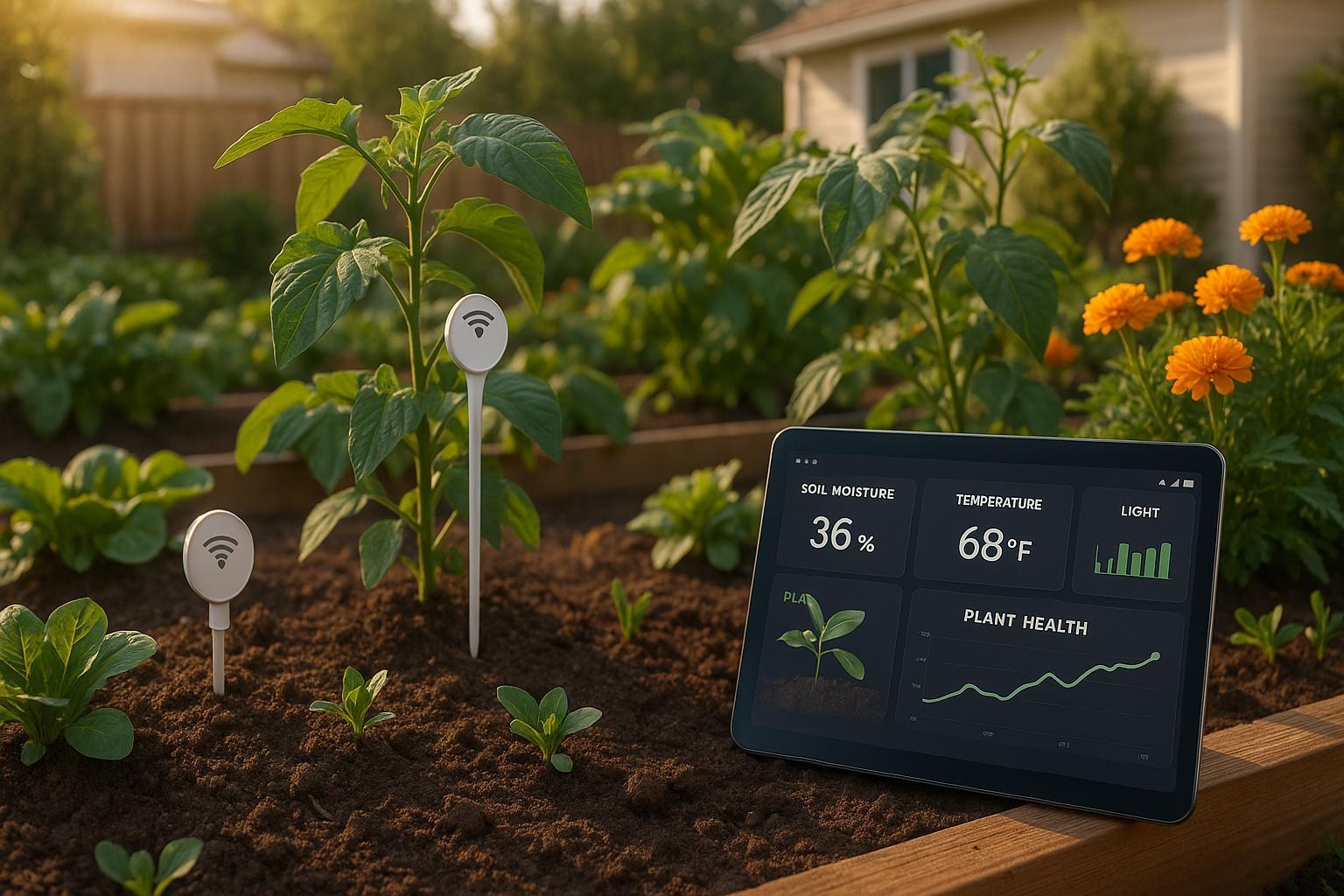
IoT Data Collection for Climate-Specific Gardening
Explore how IoT technology revolutionizes gardening by optimizing resource use, predicting diseases, and enhancing plant health for sustainable practices.
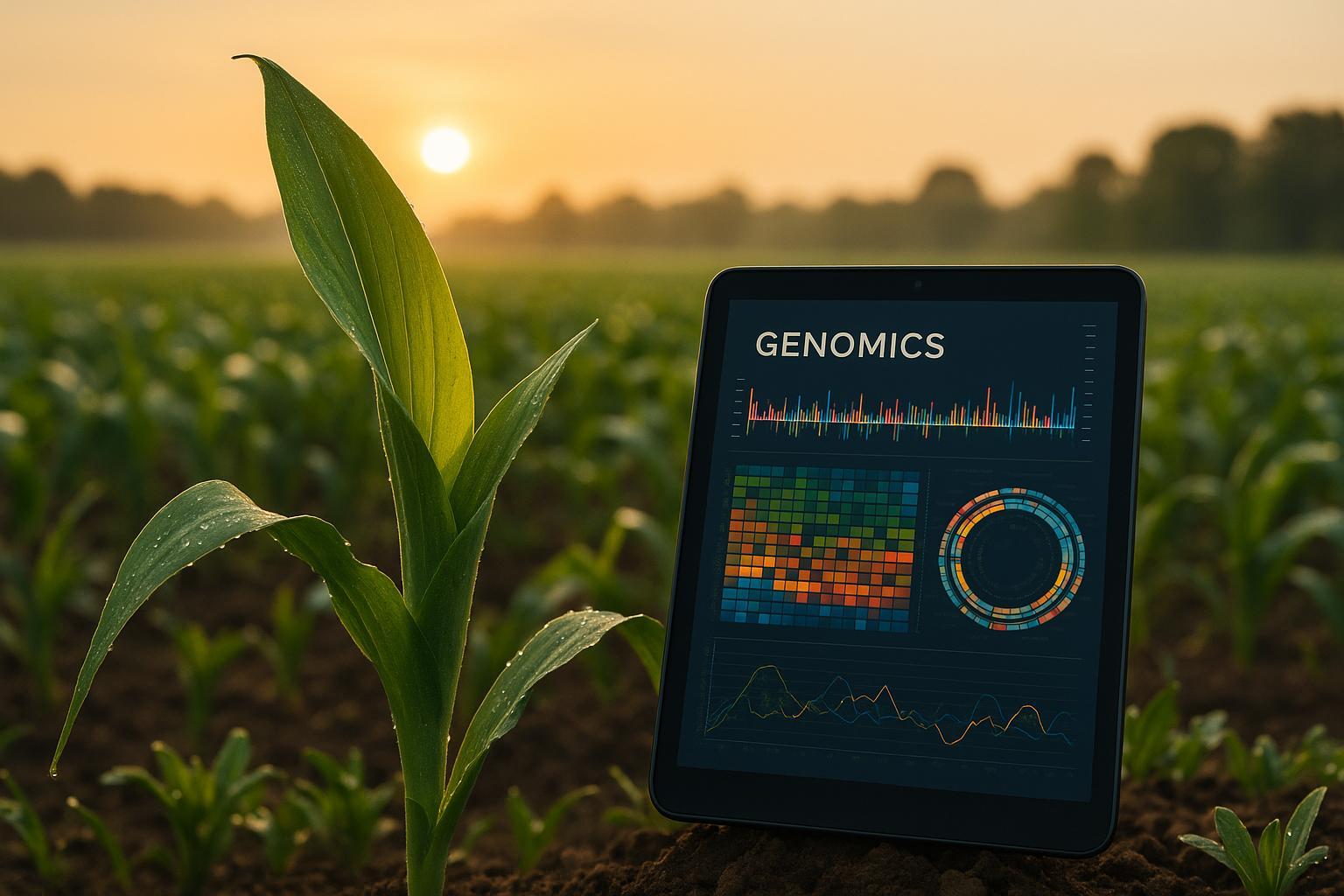
How AI Predicts Plant Disease with Genomics
Explore how AI and genomics are revolutionizing plant disease detection and management, enabling early predictions and sustainable practices.
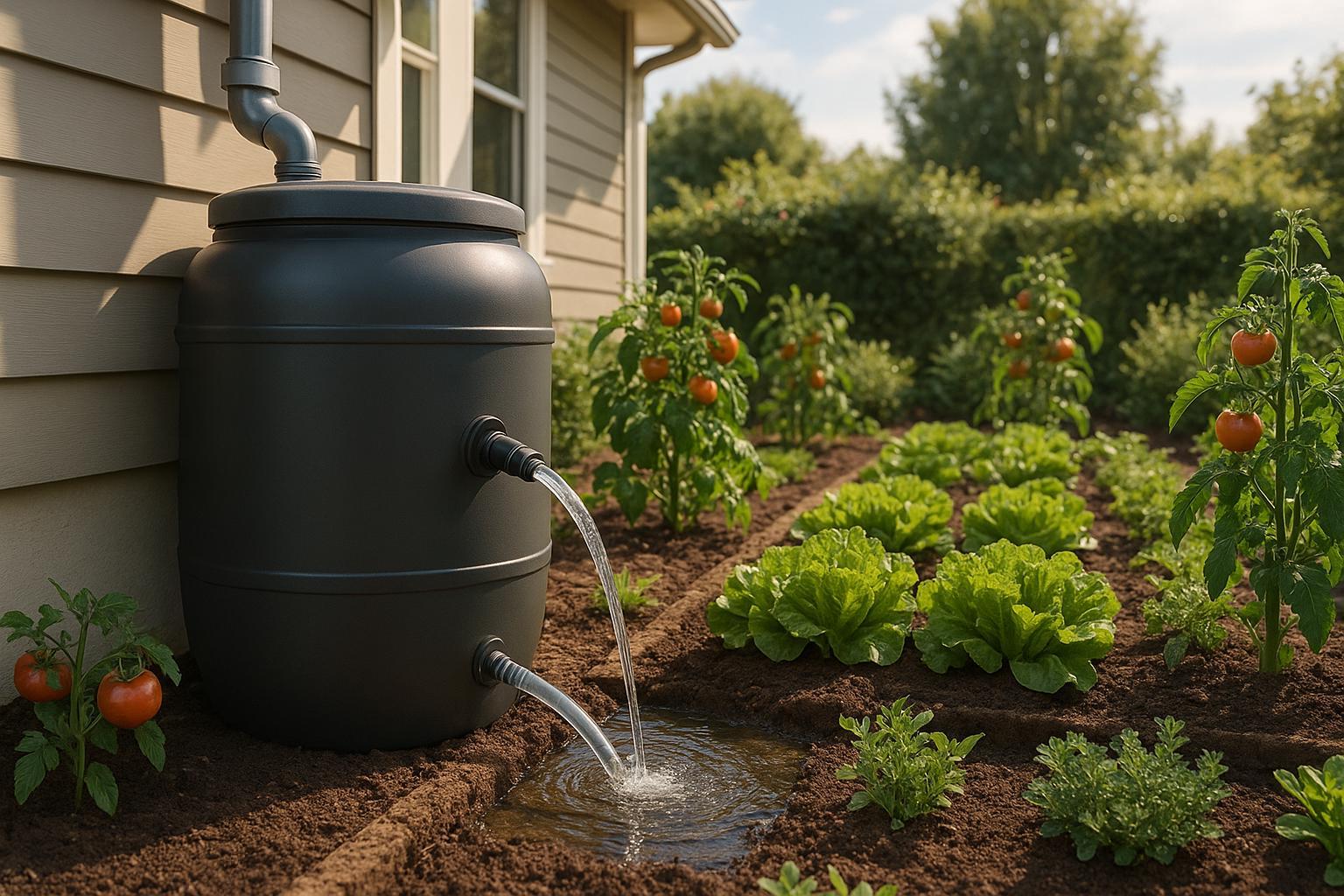
Ultimate Guide to Rainwater Filtration for Gardens
Learn how to implement an effective rainwater filtration system for your garden, enhancing plant growth while conserving water and reducing costs.
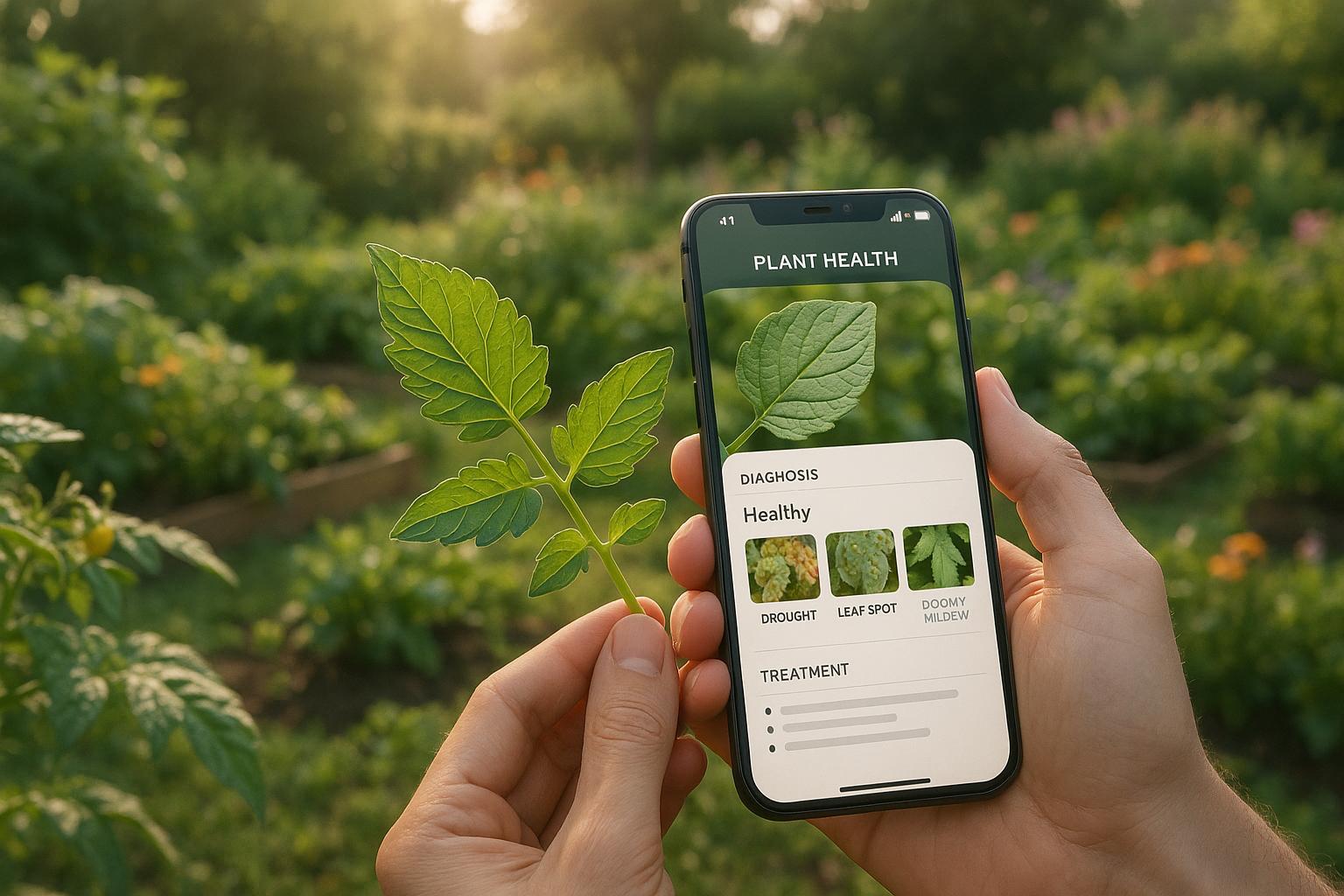
How AI Apps Predict Garden Diseases
AI gardening apps revolutionize plant care by enabling early disease detection, customized treatments, and proactive prevention strategies.